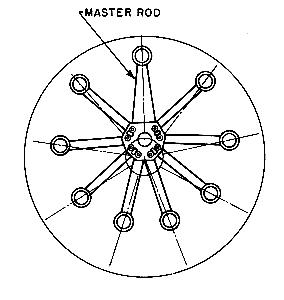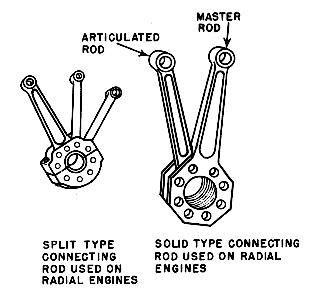 |
|
If the big end of the master rod is made of two pieces, the cap and the rod, then the crankshaft is made of one solid piece. On the other hand, if the rod is made of one piece, then the crankshaft may be of either two-piece or three-piece construction. Regardless of the type of construction, the usual bearing surfaces must be supplied. It should be understood that the type of connecting rod used in an engine depends largely on the cylinder arrangement. If the cylinders are arranged in a line parallel to the crankshaft, the connecting rod is similar to that used in most automobile engines. However, certain types of aircraft engines have a system of connecting rods connected to the same crankshaft bearing, called an articulating connecting-rod assembly. The main rod or master rod joins one of the pistons with the crankshaft, and the other rods, called articulating rods or link rods, connect the other pistons to this same master connecting rod.

|
© The Aviation History On-Line Museum.
All rights reserved.
Created November 27, 2001. Updated October 12, 2013.


